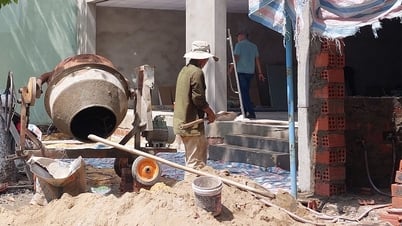
A researcher examines a 1.5 million-year-old bone tool found in Africa. (Photo: CSIC)
According to a study published in the journal Nature on March 6, human ancestors knew how to use bones to make tools 1.5 million years ago, pushing back this important moment in human evolution by more than 1 million years compared to previous assumptions.
Scientists have long concluded that ancient hominins, including Australopithecus, used bone fragments to dig for tubers or exploit termite nests, a behavior that can still be seen in chimpanzees today.
Additionally, more than 2 million years ago, prehistoric people made primitive stone tools at Olduvai Gorge in Tanzania, one of the world's most important archaeological sites.
However, evidence of humans systematically making tools from bone had not appeared before the 500,000-year mark, until the research report was published.
At Olduvai, a team led by Spanish scientists discovered 27 tools made from leg and arm bones of large animals, mainly elephants and hippos.
These tools are not just random pieces of bone but evidence of the incredible intelligence of our human ancestors.
"We clearly see the changing of the shape of the bones to turn them into long, heavy tools for specific uses," said archaeologist Francesco d'Errico of the University of Bordeaux (France), an author of the study.
According to research, the ancient people used stones to make hammers to shape bone tools. The finished products ranged in size from 20-40cm and weighed up to 1kg.
Some specimens also have a notch in the middle, possibly for easier grip. These large, pointed tools were likely used to butcher large animals.
Stone tools were still quite primitive at that time. At Olduvai, very few large stone tools have been found, possibly because the quartzite at the site was not suitable for crafting.
It was only when the Acheulean culture emerged in Africa that humans began to sharpen stones into hand axes (bifaces), a groundbreaking invention that allowed them to cut and skin animals more efficiently.
The study's hypothesis suggests that the bone-working technique at Olduvai may have been an independent invention, appearing during the transition to biface technology.
The technology then disappeared from Earth for about a million years before reappearing elsewhere, such as in the area of present-day Rome. When suitable stone was unavailable, our ancestors resorted to making axes from elephant bones.
Mr D'Errico raises the possibility that this technology may have persisted for millennia but has not been properly identified in archaeological sites.
According to this expert, on the path of evolution, humans have become increasingly sophisticated in making tools from bones. The first needles with holes for threading appeared in China and Siberia, then were introduced to Europe about 26,000 years ago./.
Thanh Phuong
Source: https://baotanglichsu.vn/vi/Articles/3099/75259/to-tien-loai-nguoi-dja-che-tao-cong-cong-cong-tu-xuong-cach-djay-1-5-trieu-nam.html



![[Photo] Prime Minister Pham Minh Chinh and Prime Minister of the Kingdom of Thailand Paetongtarn Shinawatra attend the Vietnam-Thailand Business Forum 2025](https://vphoto.vietnam.vn/thumb/1200x675/vietnam/resource/IMAGE/2025/5/16/1cdfce54d25c48a68ae6fb9204f2171a)




















![[Photo] President Luong Cuong receives Prime Minister of the Kingdom of Thailand Paetongtarn Shinawatra](https://vphoto.vietnam.vn/thumb/1200x675/vietnam/resource/IMAGE/2025/5/16/52c73b27198a4e12bd6a903d1c218846)































































Comment (0)